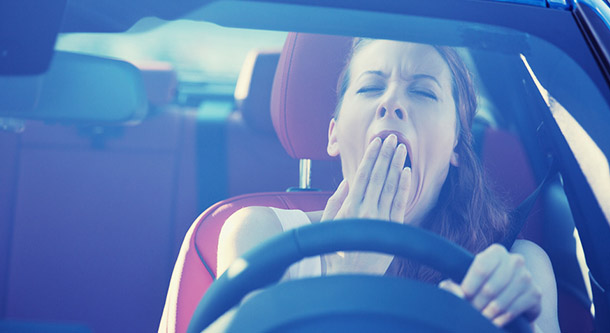 As we prepare to turn our clocks back an hour at 2 a.m. this Sunday, with the end of Daylight Saving Time, many may rejoice for the extra hour of sleep. However, AAA Mid-Atlantic is reminding drivers to be prepared for potential challenges, such as changes in sleep patterns that may increase chances of drowsy driving.
As we prepare to turn our clocks back an hour at 2 a.m. this Sunday, with the end of Daylight Saving Time, many may rejoice for the extra hour of sleep. However, AAA Mid-Atlantic is reminding drivers to be prepared for potential challenges, such as changes in sleep patterns that may increase chances of drowsy driving.
“The extra hour of sleep this weekend may seem like a gift, however, motorists need to understand the added driving dangers that come with the time change” said Tammy Arnette, Senior Public Affairs Specialist for AAA. “This one hour shift in time during the fall not only creates darker driving conditions, it can also disturb sleep patterns, perhaps even resulting in drowsy driving episodes.”
Sleep-deprived drivers cause more than 6,400 deaths and 50,000 debilitating injuries on American roadways each year, according to the National Sleep Foundation (NSF).
Nearly one in three drivers (32 percent) say they have driven when they were so tired they had a hard time keeping their eyes open in the past 30 days, according to the latest Traffic Safety Culture Report from the AAA Foundation for Traffic Safety. In fact, more than one in five (22 percent) admitted doing this more than once during that time. Previous research by the AAA Foundation estimates that drowsy driving is a factor in an average of 328,000 crashes annually, including 109,000 crashes that result in injuries and 6,400 fatal crashes.
In addition, data from the 2016 AAA Foundation for Traffic Safety Culture Index study, shows that “nearly all motorists (95.9%) view drowsy driving as a serious threat to their safety and a completely unacceptable behavior; yet, approximately 3 in 10 (28.9%) admit to driving when they were so tired that they had a hard time keeping their eyes open at some point in the past month.”
“Although the risks of driving while drowsy are well documented, that still does stop drivers from practicing this dangerous behavior,” added Arnette. “With traffic death rates three times greater at night than during the day, drivers can prevent these tragedies by being proactive with getting adequate rest and being mindful of other traveling drivers, bicyclists and pedestrians.”
AAA Mid-Atlantic Tips for Drivers
- Get plenty of sleep the night before.
- Take breaks when driving long distances. AAA suggest stopping for a break every two hours or 100 miles.
- Slow down.
- Turn on your headlights to become more visible during early morning and evening hours.
- Keep vehicle headlights and windows (inside and out) clean.
- Do not use high beams when other cars or pedestrians are around.
- Yield the right of way to pedestrians in crosswalks and do not pass vehicles stopped at crosswalks.
AAA Mid-Atlantic Tips for Pedestrians and Bicyclists
- Cross only at intersections. Look left, right and left again and only cross when it is clear. Do not jaywalk.
- Cross at the corner – not in the middle of the street or between parked cars.
- Avoid walking in traffic where there are no sidewalks or crosswalks. If you have to walk on a road that does not have sidewalks, walk facing traffic.
- Evaluate the distance and speed of oncoming traffic before you step out into the street.
- Wear bright colors or reflective clothing if you are walking or biking near traffic at night. Carry a flashlight when walking in the dark.
- Avoid listening to music or make sure it is at a low volume so you can hear danger approaching.
- Bicycle lights are a ‘must have’ item for safe night riding, especially during the winter months when it gets dark earlier.


